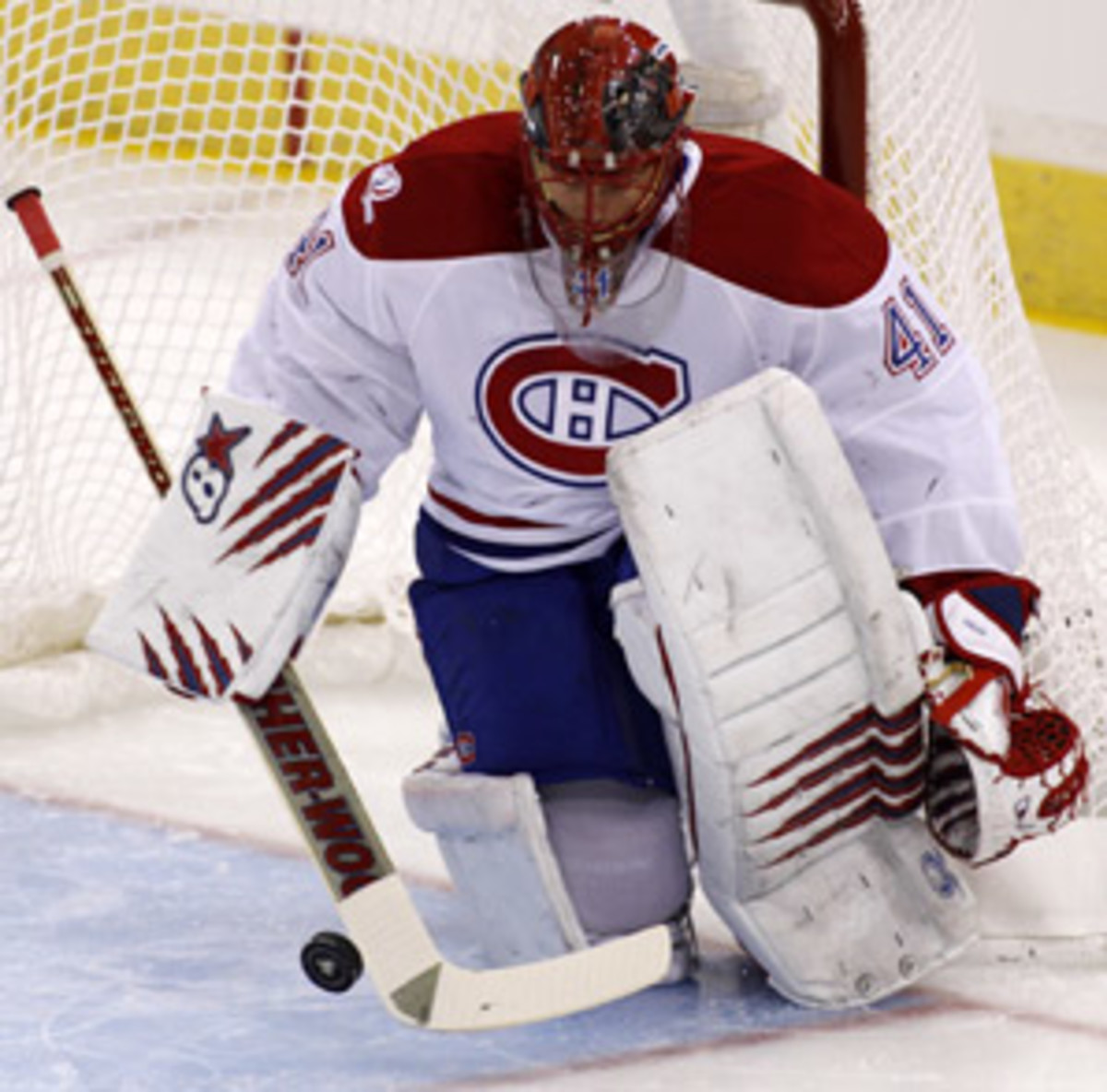Smiles in St. Louis, questions in Montreal after Halak trade


The hockey world was stunned on Thursday to learn that Canadiens GM Pierre Gauthier had finally drawn the curtain on the league's longest-running drama by dealing away playoff hero Jaroslav Halak. But the most surprising twist to the story? Apparently there was another team involved in the trade.
No arguing that the perspective from Montreal is widely viewed as the most compelling angle of this shocking swap. After all, Gauthier not only gave up on the breakout star of the 2010 playoffs -- a goalie regarded by some locals as the second coming -- for a couple of magic beans and a pinch of salary cap space, he also turned the No. 1 job over to Carey Price. No wonder the peddlers of ashes and sackcloth are doing land office business this morning.
But while there's much mourning and gnashing of teeth in La Belle Province, the folks in Halak's new home town have to be absolutely giddy about their end of the deal. And the fans in St. Louis should be especially pleased with Doug Armstrong. He doesn't officially take the keys to the Blues GM's office until July 1, but this was Army's move all the way. And it was exactly the sort of bold action that a young, talented team on the verge of a breakthrough required.
The Blues, after all, haven't developed a reliable stopper on their own since they plucked Curtis Joseph out of free agent obscurity back in the pre-Internet era. Now, after a series of failed picks (where have you gone, Marek Schwarz?) and stopgap half-measures in net (paging Manny Legace), they finally appear to have a young goaltender they can build around for the next five years. Maybe more.
There will be some doubters who wonder if this was a trade based solely on April and May. Fair enough. But Halak didn't simply catch lightning in a bottle as he carried the Canadiens to shocking upsets of the Washington Capitals and Pittsburgh Penguins. He was magnificent for Slovakia in the Olympics and over the past two seasons has posted the fourth-best save percentage in the NHL. Admittedly, that's not quite enough to earn him his Hall of Fame pass just yet, but it's reason enough to believe that the Blues might finally avoid the netminding banana peel that seems to trip them up every spring.
And there'll be a small minority concerned that a team that averaged a middling 2.66 goals per game cashed in its most promising offensive prospect in Lars Eller instead of holding on to him and picking through a name-heavy crop of free agent talent come July 1. Again, a reasonable concern.
Eller, the 13th overall pick in 2007, is a promising two-way talent who is projected to develop into a reliable second-line center. Scouts love his compete level, but differ on his scoring potential. If he matures into a 30-goal, 75-point player, then the Blues paid a steep price. If he's a 20-50 guy, well, that's a quantity that's more readily replaced. And Ian Schultz, the other player involved? The 87th overall pick of 2008 is a rangy, grinding winger who showed some touch to go with his toughness last season with Calgary of the WHL. He would have looked nice working the boards in St. Louis as a third-liner some day.
So sure, the Blues could have gone the something-for-nothing route, muscling their way to the front of the free agent line to grab their choice of aging veterans. But Armstrong recognized that would have been just another short-term solution, another ill-fitting part. So he anted up Eller and Schultz for the right one.
That's not the only element of risk to this deal for the Blues. They still need to get Halak signed to a new deal, preferably before he becomes a restricted free agent. And he won't be cheap. Four million per is the best-case scenario. And there is a chance, albeit a small one, that he could be targeted for an offer sheet that leaves the Blues to settle for draft picks in exchange. But if one judges by the smiles in St. Louis this morning, those are risks worth taking to solve the Blues' own long-running drama.
Back in Montreal, there are three questions stoking the unrest:
First, why did the Habs part with Halak without so much as speaking to his agent, Alan Walsh, regarding a new contract?
The answer to that one seems fairly obvious: despite Halak's playoff heroics, Gauthier viewed Price as the club's best option moving forward. That could be a result of both talent assessment and financial prudence, with an emphasis on the latter. After all, every one of those postseason wins added to Halak's asking price -- one that the team couldn't afford, especially while trying to retain UFA forward Tomas Plekanec. Ultimately, though, this came down to an untenable luxury in the cap era. Two goalies, one net. Right or wrong, Gauthier at least made a call.
Second, why was the return so minimal for a player whose value has never been higher?
No doubt Halak added to his curb appeal in April and May, but there were a lot of For Sale signs popping up in his neighborhood. With names like Evgeni Nabokov, Marty Turco, Martin Biron, Jose Theodore, Dan Ellis and Michael Leighton (hey, the guy was two wins away from the Cup!) hitting the market, the supply was simply higher than the demand from the four teams looking for a new No. 1. Tough to up the asking price when there are so many low-ball opportunities.
And third, is the wildly inconsistent Price truly ready to assume the No. 1 job in Montreal without a safety net?
Well, that's the question that makes me wish I had one of those ashes and sackcloth franchises...
